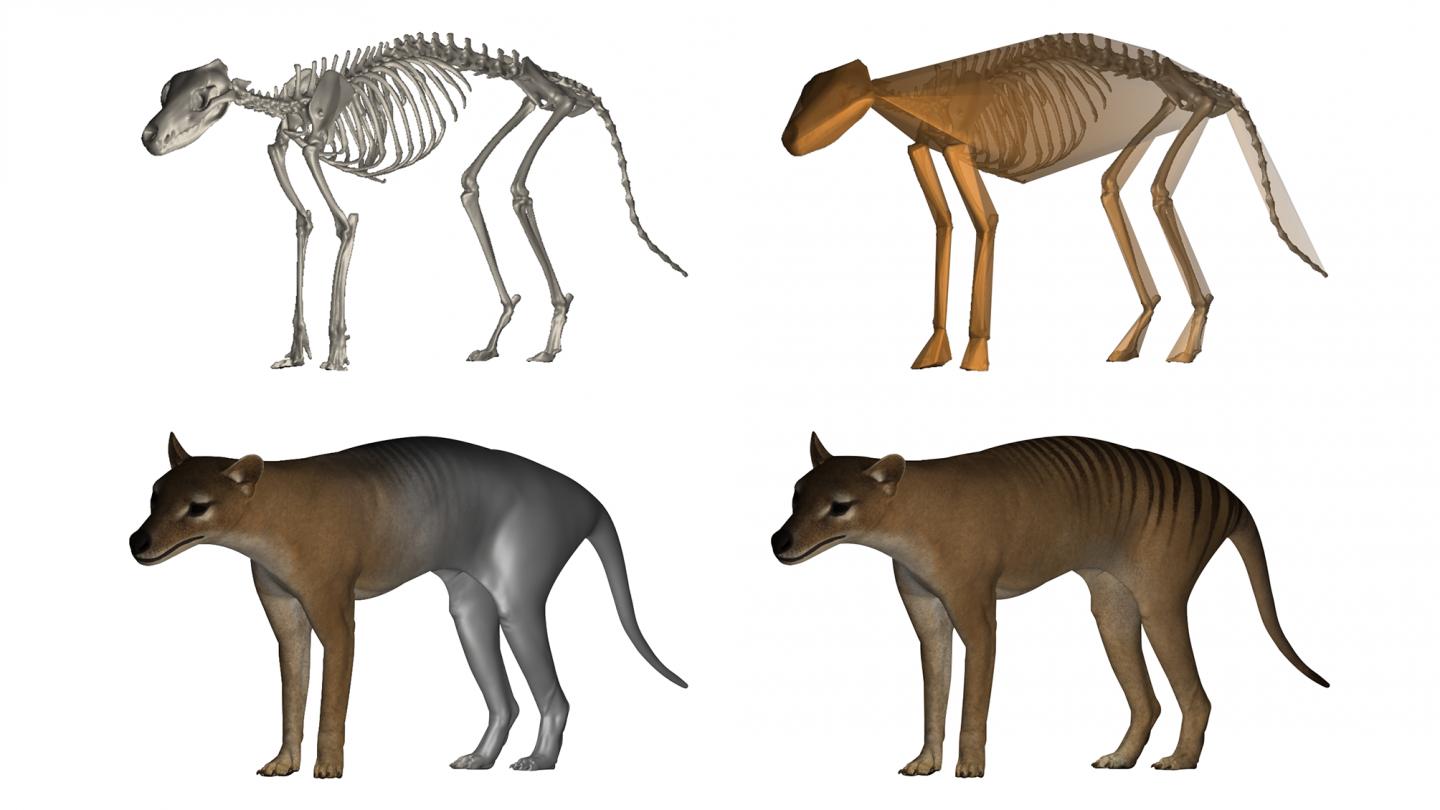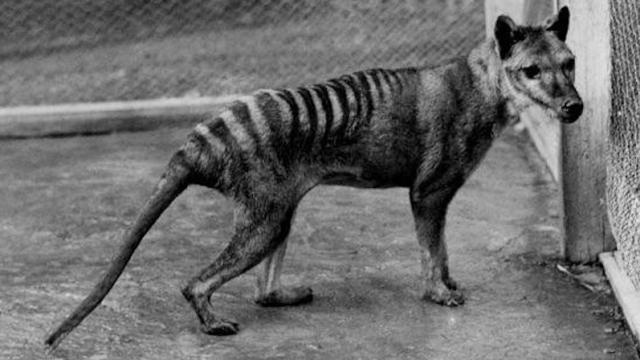An extensive analysis of dozens of Tasmanian tiger specimens suggests the extinct marsupial was far smaller, and far less formidable as a hunter, than conventionally assumed.
Thylacines, otherwise known as Tasmanian tigers, became extinct in the 1930s. These iconic marsupial carnivores disappeared from this good Earth before modern scientists had an opportunity to study them in detail, and photographic and video evidence is quite scarce, so there’s a lot about them that we don’t know.
Earlier this year, newly restored footage from 1935 provided a rare but painfully brief view of a live thylacine kept at a Tasmanian zoo. The Tasmanian tiger, “easily distinguished by his striped, unjointed tail, is also a dangerous opponent,” declared the film’s narrator in his old-timey accent.
That Tasmanian tigers were “dangerous” was a common perception at the time. During the 19th century, for example, newspapers portrayed these carnivores as being large and threatening, most certainly not an animal to be trifled with. This opinion of thylacines has endured to this very day, with biologists declaring the species to be a potent example of convergent evolution, a process in which unrelated species exhibit similar characteristics; hence the comparison of thylacines to wolves.
This perception appears to be wrong, according to new research published in Proceedings of the Royal Society B. Thylacines, as the new research shows, were only half as big as we thought. The surprising result alters our understanding of thylacine biology and this species’s former role within the Australian ecosystem. The new paper was led by Ph.D. student Douglass Rovinsky from Monash University.
For the analysis, Rovinsky and his colleagues performed a traditional physical analysis of thylacine specimens, while also studying digital renderings of the animals produced from high-resolution 3D scans. In total, the researchers analysed 93 individual thylacine specimens acquired from museums in six countries.

The research found that the actual average body mass of the extinct Tasmanian tiger was from 30 to 46 pounds (14 to 21 kg), as opposed to the previous estimate of 55 to 64 pounds (25 to 29 kg). That’s just 55% the size of its previously presumed weight! Accordingly, the new paper is forcing a reassessment of this animal’s diet, mating habits, hunting strategies, mobility, and its role within the ecosystem. And in fact, the new research could shed new light onto the reasons for its eventual extinction.
Rovinsky and his colleagues also chronicled a significant degree of sexual dimorphism in the extinct species, meaning physical differences between males and females. The mean weight of males was 43 pounds (19.7 kg), while for females the number was closer to 30 pounds (13.7 kg).
The mean weight of the mixed-sex population was documented at 36.8 pounds (16.7 kg). This is an important finding, as it’s far below the 46 pound (21 kg) weight threshold required for predators to take down large prey, according to the research. Tasmanian tigers, as this finding suggests, were specialists who preyed upon small animals, in a result that upsets our opinion of thylacines as the marsupial equivalent of wolves.
“We demonstrate strong differences in average male and female body size,” explained Justin Adams, a co-author of the study and a researcher at Monash University, in a press release. “This result also fundamentally challenges prior views about the thylacines as a carnivore, and underscores that thylacines were a predator that evolved to consume prey smaller than themselves.”
To which Rovinsky added: “Rewriting the thylacine as a smaller animal changes the way we look at its position in the Australian ecosystem — because what a predator can — and needs to — eat is very much dependent on just how big they are.”
Viewing the old photographs and videos of Tasmanian tigers, as limited as they are, seems to jibe with this research. These animals look a bit puny — about the size of a medium-sized dog — and certainly smaller than wolves, which can weigh upwards of 145 pounds (66 kg). This result is probably not what we were hoping for, but hey, that’s science. We’ll just have to adjust our thinking accordingly.
